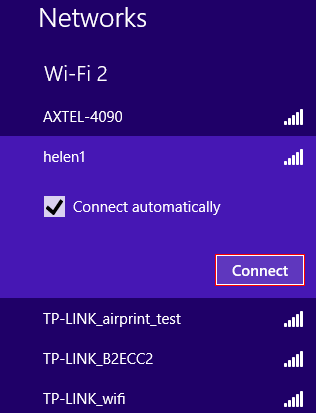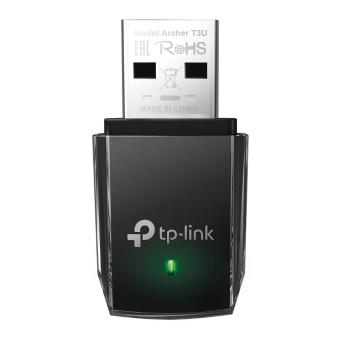How to use TP-Link network adapters on Windows 8
TL-WN422G , TL-WN725N , Archer T2E , TL-WDN3200 , TL-WN723N , TL-WN822N , Archer T4E , TL-WN721N , TL-WN951N , Archer T6E , TL-WN8200ND , Archer T8E , TL-WN422GC , Archer T2U , Archer T4U , Archer T2UHP , TL-WN722NC , Archer T4UHP , TL-WDN3800 , TL-WN881ND , TL-WN322G , Archer T4UH V2 , TL-WN7200ND , TL-WN823N , Archer TX1800U Nano , TL-WN350GD , Archer T2U Nano , TL-WN781ND , TL-WN722N , Archer T3U Plus , Archer T9E , Archer T600U Plus , Archer T9UH , Archer T5E , Archer T4UH , Archer TX50E , Archer T1U , Archer T2UH , Archer T3U , Archer T600U Nano , TL-WDN4800 , Archer T3U Nano , Archer T2U Plus , TL-WN727N
Recent updates may have expanded access to feature(s) discussed in this FAQ. Visit your product's support page, select the correct hardware version for your device, and check either the Datasheet or the firmware section for the latest improvements added to your product. Please note that product availability varies by region, and certain models may not be available in your region.
This FAQ contains 2 parts:
Part 1: How to install TP-Link network adapters on Windows 8.
Part 2: After a successful installation, how to connect to the wireless network.
NOTE:
Old or useless drivers may affect the installation of the new driver, it is recommended to remove the old driver first, please refer to the FAQ 3769
Part 1: How to install
Due to that Windows 8 has integrated with many adapter drivers, most TP-Link network adapters can be
Plug & Play. When you plug a Plug & Play adapter into a computer with Windows 8, the system will pop up a window as below:
.png)
When the installation process is finished, this window will be closed automatically.
If the adapter is successfully installed, there are some symbols:
1. The LED light on the adapter is flashing.
2. Unplug the network cable from your computer, you may find the wireless network connection icon at the right bottom corner of the screen. And if you click on it, you can see the wireless network list.

3. Right click Computer on your desktop, click Manage to open the window Computer Management and find Device Manager. Then click Network Adapters, and you’ll find the adapter you just installed.
NOTE :
If you are not an administrator, you will be prompted to type an administrator password, and then click on Yes.
.png)
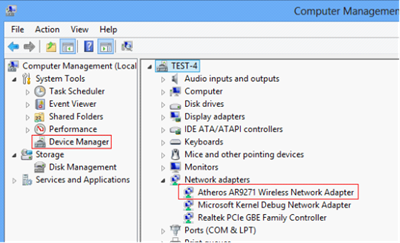
If the adapter is not installed successfully, you will find the uninstalled network adapter in the Other Devices:
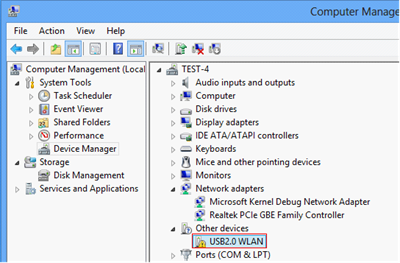
If the Windows 8 automatic installation fails, please double check the compatibility list and download the Windows 8
driver from the list, then you can follow this guide to install the driver manually.
Part 2: After a successful installation, how to connect to the wireless network
Step 1: Find the wireless icon at the right bottom corner of the screen, and click on it.

Step 2: In the pop-up window, select your wireless network and click Connect.
It is recommended to tick “Connect automatically”.
Step 3: Type in the right wireless password (The password is often called security key or network key, which is
created by your wireless modem/router. If you have no idea about it, please contact the wireless modem/router's
tech support). Then click Next.
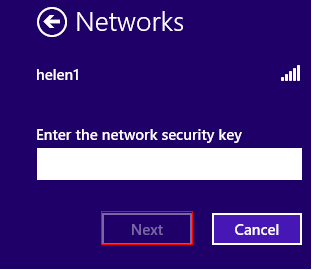
Step 4: Select Yes or No according to your needs.
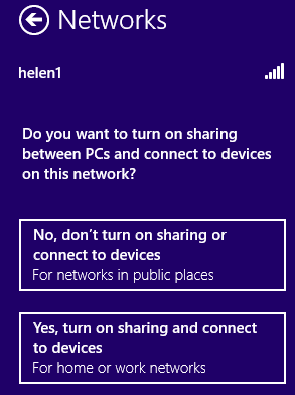
Then the computer should be successfully connected to the wireless network, the wireless icon and the wireless
network list will be as below:
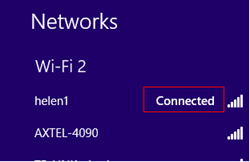

If there are any further problems, please feel free to contact TP-Link support.
Is this faq useful?
Your feedback helps improve this site.
What’s your concern with this article?
- Dissatisfied with product
- Too Complicated
- Confusing Title
- Does not apply to me
- Too Vague
- Other
Thank you
We appreciate your feedback.
Click here to contact TP-Link technical support.
TP-Link Community
Still need help? Search for answers, ask questions, and get help from TP-Link experts and other users around the world.
This website uses cookies to improve website navigation, analyze online activities and have the best possible user experience on our website. You can object to the use of cookies at any time. You can find more information in our privacy policy . Don’t show again
This website uses cookies to improve website navigation, analyze online activities and have the best possible user experience on our website. You can object to the use of cookies at any time. You can find more information in our privacy policy . Don’t show again
Basic Cookies
These cookies are necessary for the website to function and cannot be deactivated in your systems.
TP-Link
accepted_local_switcher, tp_privacy_base, tp_privacy_marketing, tp_smb-select-product_scence, tp_smb-select-product_scenceSimple, tp_smb-select-product_userChoice, tp_smb-select-product_userChoiceSimple, tp_smb-select-product_userInfo, tp_smb-select-product_userInfoSimple, tp_top-banner, tp_popup-bottom, tp_popup-center, tp_popup-right-middle, tp_popup-right-bottom, tp_productCategoryType
Livechat
__livechat, __lc2_cid, __lc2_cst, __lc_cid, __lc_cst, CASID
Youtube
id, VISITOR_INFO1_LIVE, LOGIN_INFO, SIDCC, SAPISID, APISID, SSID, SID, YSC, __Secure-1PSID, __Secure-1PAPISID, __Secure-1PSIDCC, __Secure-3PSID, __Secure-3PAPISID, __Secure-3PSIDCC, 1P_JAR, AEC, NID, OTZ
Analysis and Marketing Cookies
Analysis cookies enable us to analyze your activities on our website in order to improve and adapt the functionality of our website.
The marketing cookies can be set through our website by our advertising partners in order to create a profile of your interests and to show you relevant advertisements on other websites.
Google Analytics & Google Tag Manager
_gid, _ga_<container-id>, _ga, _gat_gtag_<container-id>
Google Ads & DoubleClick
test_cookie, _gcl_au
Meta Pixel
_fbp
Crazy Egg
cebsp_, _ce.s, _ce.clock_data, _ce.clock_event, cebs
lidc, AnalyticsSyncHistory, UserMatchHistory, bcookie, li_sugr, ln_or
